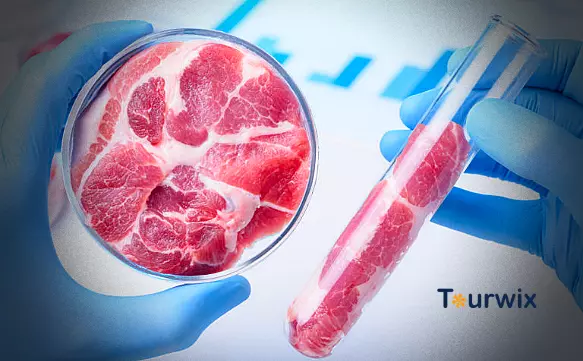
Tourwix News
31.08.2021 1651
Food of the future Artificial meat
As Tourwix Travel, we prepare informative content for you in many different categories on topics that have an impact on the global and local agenda, have a major impact or help shape different events.
Food of the future Artificial meat. In this article, we have prepared some informative content about artificial meat that has been talked about in the past, that still works today, and that we believe will have a place in our lives in the years to come.
What is artificial meat?
Artificial meat; Stem cells taken from the body of certain breeds of animals without harming the animals and meat produced in a laboratory setting using various technologies. Artificial meat stem cells obtained without killing animals are preserved in certain chemical liquids.
Artificial meat is seen as both a precautionary measure and a solution to the paradox of meeting unlimited human needs with limited resources for global disasters the effects of which are visible today, such as the gradual increase in world population, climate change, drought and famine.
With the increase in the world population, animal meat has become very expensive financially. In addition, animal methane problems, particularly from animal farming, are increasing global warming fairly quickly.
The studies on artificial meat production, which are still in the dark in many areas today, are being rapidly continued and seen as a solution to the life problems of future generations that will arise as a result of global warming.
How is artificial meat made?
As mentioned earlier, the production of artificial meat is actually considered very beneficial to humanity and preventing many disasters, but there are still many unknowns about artificial meat today.
The first thing that pops up in people's minds and faces a lot of problems is how to make artificial meat. In the most general definition, artificial meat is preserved in chemical liquids containing nutritious sources of protein by taking stem cells from animals in a laboratory setting.
First, stem cells from different animals (the main sources of protein) are added to chemical fluids and a component is formed from them. In addition, these components include certain types of fungi and microorganisms obtained from plants.
Animal stem cells are added to the nutrient fluids obtained from these mixtures and are expected to grow like a plant in the laboratory setting. In this case, the most useful point comes from this step.
There is no need to kill animals for meat production, which reduces the number of animals that need to be raised around the world. This situation has great benefits for humanity and climatic conditions in terms of direct global warming and carbon emissions.
Although the substances with the largest share of these benefits are seen as climate effects, the aim is to obtain salable meat at a very affordable cost in terms of economy.
Is Artificial Meat Safe?
Another problem with fake meat activities that involve many unknowns is whether fake meat is safe? According to studies by the University of Oxford, methane gas, which is produced during meat production, can reach very high levels under normal conditions. In addition, there is no methane gas formation during artificial meat production, but carbon dioxide can be released.
However, according to experts, the resulting carbon dioxide can be absorbed with the help of certain techniques. If conditions continue like this, it would appear that artificial meat production will find its way into our daily lives.



